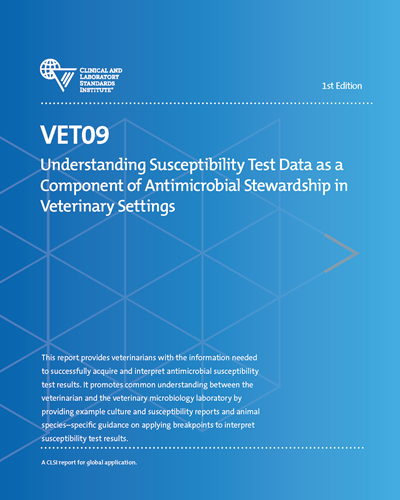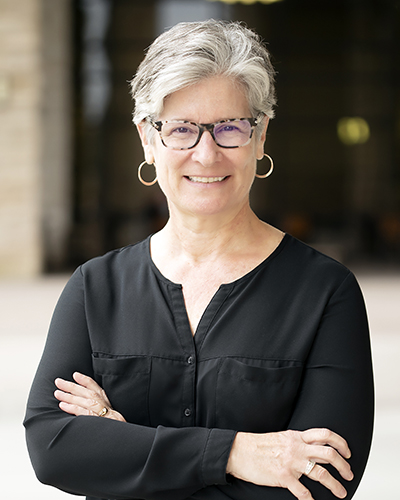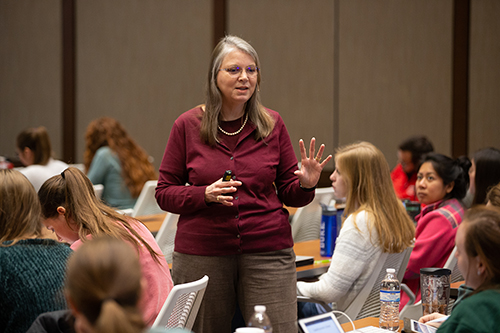Texas A&M CVM Purchases Comprehensive Resource For All Students In Effort To Increase Education On Antimicrobial Stewardship
Story by Jennifer Gauntt, CVMBS Communications

Antimicrobial resistance is an increasingly serious threat to global public health that affects humans, animals, and the environment; in fact, in recent years, the World Health Organization (WHO) has named it a top 10 public health threat for the world.
Texas A&M College of Veterinary Medicine & Biomedical Sciences (CVM) students learn about antimicrobial resistance throughout their veterinary curriculum, including in microbiology and pharmacology classes, as well as during their fourth-year clinical rotations in the CVM’s Veterinary Medical Teaching Hospital (VMTH).
But when Drs. Virginia Fajt and Sara Lawhon completed their work with a Clinical and Laboratory Standards Institute (CLSI) committee to produce the first comprehensive resource for understanding and interpreting antimicrobial susceptibility test results, they knew that the report would not only be of value to working veterinarians who tend to have a limited understanding of a very complex topic, but would also be of value to veterinary students who are introduced to the concepts during their curriculum.
The report, “Understanding Susceptibility Test Data as a Component of Antimicrobial Stewardship in Veterinary Settings,” has been years in the making. After continued discussions within committees at the CLSI and American Veterinary Medical Association (AVMA) on the importance of antimicrobial stewardship and on the necessity of this kind of document, Fajt and other experts put together a proposal to finally bring the project to fruition under the auspices of CLSI.
The end result—a product of a committee of professional microbiologists, pharmacologists, and veterinary clinicians, including Lawhon, and led by Fajt and program manager Lori Moon—addresses challenges veterinarians face every day in understanding how antimicrobial drugs work and how veterinarians can use laboratory data in their decision-making for antimicrobial stewardship.
“Antimicrobial stewardship means, in general, implementing management and prevention programs so that antimicrobials aren’t needed in the first place, so that animals don’t get bacterial diseases when that’s possible,” Fajt said. “It involves using good decision-making tools, having all of the necessary information, the high-quality evidence, to select an antimicrobial or decide whether an antimicrobial will make a difference; to choose an antimicrobial that will make a difference; and then monitor individual patients for response. But it also includes monitoring antimicrobial use in your practice setting in a way that allows you to quality-assess your own decision making.

“So, the goal of this document is to protect antimicrobials—that antimicrobial susceptibility, the ability for antibiotics to work—as a societal resource; all of this is something that we all have responsibility for,” Fajt said. “Our responsibility as the veterinary profession is to do the best we can to maintain the effectiveness of antibiotics, use the resource wisely, and make good decisions, as opposed to easy decisions.”
The report is unique for several reasons.
While textbooks generally provide information on antibiotics as drugs and focus on what they do and how they work, there has been relatively little information on how veterinarians should choose among the many antimicrobial drug options.
In addition, as the first comprehensive source of information on the topic and the first resource that targets practicing veterinarians, this resource works to guide practicing veterinarians’ decision-making, not necessarily in choosing a drug, but to understand the information (such as lab results) that will help them choose a drug, according to Fajt.
As the CLSI document was taking shape, Lawhon decided that it would be a huge resource for CVM students.
“For them to get the maximum benefit out in practice from it, having the opportunity to work with it in advance would be really helpful,” she said. “Right now, the information shared in classes on this topic is disparate, so this document helps unify that story in a way that hasn’t been done before.”
Lawhon and other professors who teach about antimicrobial resistance—including Fajt and Drs. Johanna Heseltine, Joanne Hardy, Jeffrey Musser, Mark Johnson—created a proposal for internal funds to provide a copy to all students and integrate the subject into the new curriculum as a progression, with students learning different aspects of antimicrobial stewardship during all four stages of their veterinary careers.

“I really felt that this was a great opportunity for our students, to bring this in at each level of the process,” Lawhon said. “We had asked the VMTH to buy a copy for every service so that clinicians can use it when talking to fourth-year students about their decision-making processes in selecting an antibiotic for their patients.
“Then our students could carry this document and these lessons with them out into practice, to think through stewardship programs for their own antimicrobial decision-making processes and to start thinking about a stewardship program for their clinics,” she said.
The CVM’s Professional Programs Office (PPO) approved the proposal, and free copies were provided to all four veterinary classes, including the recently graduated Class of 2020, which will also have the opportunity to attend a webinar by Fajt and Lawhon to learn how to use the resource. The CVM is the first—and possibly the only—veterinary school in the country to share the resource with their students and integrate the content in this way.
“The PPO Office deserves credit for recognizing that antibiotic resistance is a huge issue in the profession,” Fajt said. “It’s certainly a conversation that we have across the profession, so making the commitment as a college to provide this kind of teaching tool—that in some ways is sort of narrowly defined, yet is so important to how veterinarians make decisions about antibiotics—really demonstrates a commitment to antimicrobial stewardship.”
###
For more information about the Texas A&M College of Veterinary Medicine & Biomedical Sciences, please visit our website at vetmed.tamu.edu or join us on Facebook, Instagram, and Twitter.
Contact Information: Jennifer Gauntt, Director of CVM Communications, Texas A&M College of Veterinary Medicine & Biomedical Sciences; jgauntt@cvm.tamu.edu; 979-862-4216


